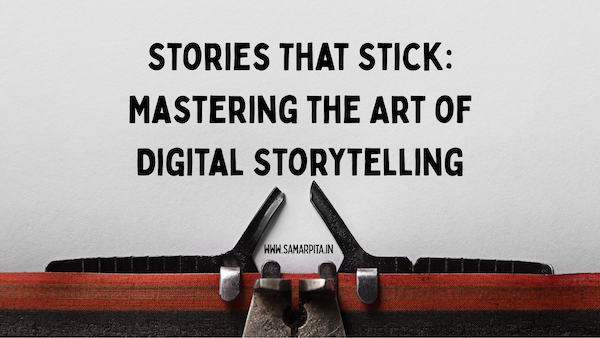Great storytelling transforms ordinary content into memorable experiences. In a world flooded with information, stories cut through the noise and connect with audiences on a human level. Whether crafting social media posts, blogs, or marketing campaigns, storytelling skills separate forgettable content from share-worthy narratives.
Also Read: Manuscript Editing
Why Storytelling Works
Our brains are wired for stories. They help us:
- Process information faster
- Remember details longer
- Connect emotionally with messages
- Share content more willingly
Brands that master storytelling see 300% more engagement than those sharing only facts. Stories make statistics stick and ideas irresistible.
The Anatomy of a Great Story
Effective stories share key elements:
1. Relatable Characters
Feature real people—customers, team members, or personas your audience recognizes. A startup might share its founder’s journey rather than product specs.
2. Meaningful Conflict
Show challenges before solutions. A fitness brand could profile someone overcoming health struggles before showcasing their program.
3. Emotional Arc
Take readers from frustration to hope, curiosity to surprise. Emotion drives sharing more than logic.
4. Authentic Voice
Write like you speak to a friend. Corporate jargon kills connection.
5. Clear Resolution
End with satisfying takeaways—lessons learned, problems solved, or actions to take.
Storytelling Formats That Work
Different platforms favor different approaches:
Instagram Stories
- Behind-the-scenes glimpses
- Day-in-the-life sequences
- Customer transformation journeys
LinkedIn Posts
- Professional growth stories
- Lessons from failures
- Industry insight narratives
Blog Articles
- Case studies with character arcs
- How-to guides framed as hero’s journeys
- Opinion pieces with personal context
TikTok Videos
- Problem/solution skits
- Unexpected twist endings
- Relatable workplace humor
Finding Your Brand’s Stories
Mine these rich storytelling sources:
Customer Experiences
- Success stories (with permission)
- Unexpected use cases
- Testimonials with emotional hooks
Team Insights
- Employee spotlights
- “How we solved this” stories
- Company culture moments
Industry Perspectives
- Trend explanations through human impact
- History lessons with modern parallels
- Future predictions grounded in today’s struggles
Structure Techniques That Engage
The Hero’s Journey
- Ordinary world
- Challenge appears
- Struggle and growth
- Solution and transformation
Before-After-Bridge
- Problem the audience recognizes
- Improved reality they want
- Your solution as the connector
The “And-But-Therefore” Framework
- AND establishes context
- BUT introduces conflict
- THEREFORE presents resolution
Sensory Storytelling
Engage more senses with:
- Visual language: “The cracked screen glared back” vs. “The phone was broken”
- Sound cues: “The cha-ching of a first sale”
- Physical descriptions: “Fingers trembling as they clicked Purchase”
Avoiding Common Mistakes
- Making it about you – The audience should see themselves as the hero
- Overcomplicating – One clear message per story
- Forgetting the hook – Capture attention in the first three seconds
- Ignoring platform norms – A Reddit story differs from a LinkedIn post
Measuring Story Impact
Track beyond likes and shares:
- Completion rates – How many finish watching/reading?
- Comment sentiment – Emotional responses indicate connection
- Time spent – Longer engagement suggests captivation
- Conversion lifts – Stories that actually drive action
Tools to Enhance Storytelling
- Canva – Creates visual story sequences
- CapCut – Edits compelling video narratives
- Grammarly – Polishes language without losing voice
- Headliner – Turns audio stories into videos
Getting Started Today
Try this simple exercise:
- Recall a recent customer interaction
- Identify the struggle and solution
- Frame it as a three-part story
- Share it on one platform
Notice how it performs compared to standard posts.
The Lasting Power of Stories
While metrics change and algorithms evolve, storytelling remains timeless. The brands that will thrive aren’t those with the biggest budgets—but those who tell the most compelling stories.
Your next post could be the story someone remembers and shares. Not because you sold them something, but because you made them feel something.
Start small. Tell one true story this week. Watch how your audience responds, then tell another. The most influential voices in any industry aren’t just sharing information—they’re telling stories worth hearing.
What story will you tell today?
I’m participating in #BlogchatterA2Z.
———————————————————————
Are you a coach or business owner looking for a content writer for your website or social media? I can help you create compelling, high-quality content that drives results. Reach out to me at editor@samarpita.in. You can also connect with me on Instagram @samarpita and X @samarpitadotin. Visit my website www.samarpita.in to learn more about my services.

